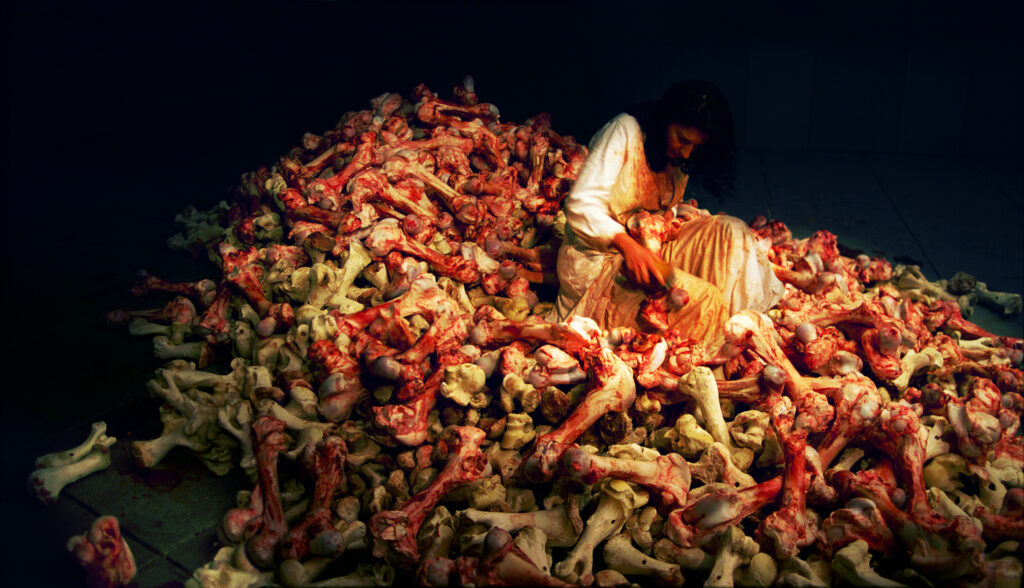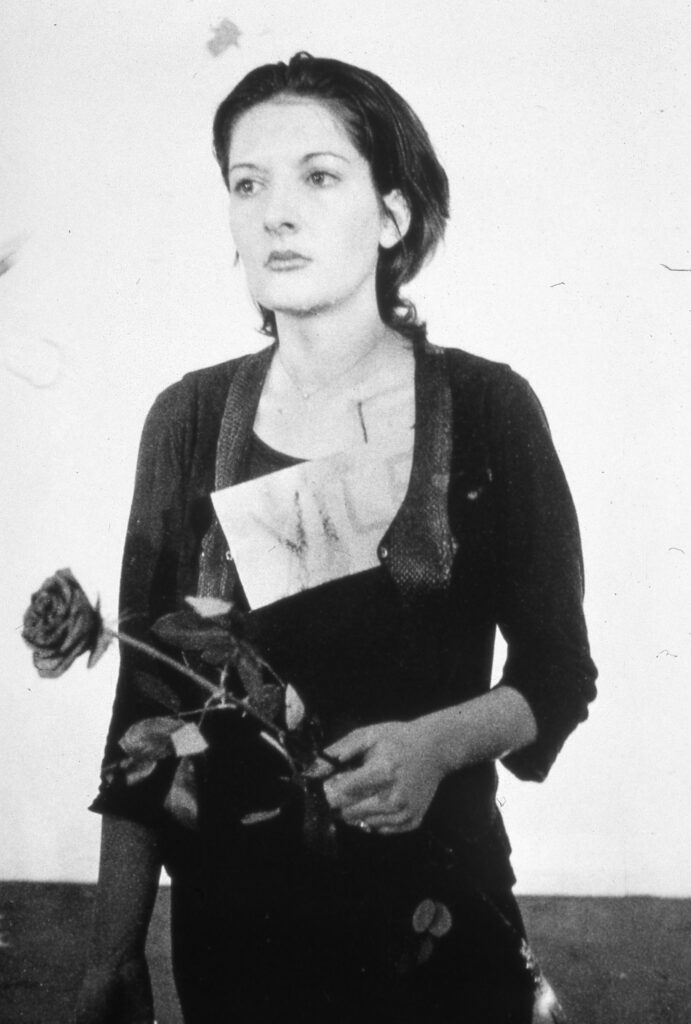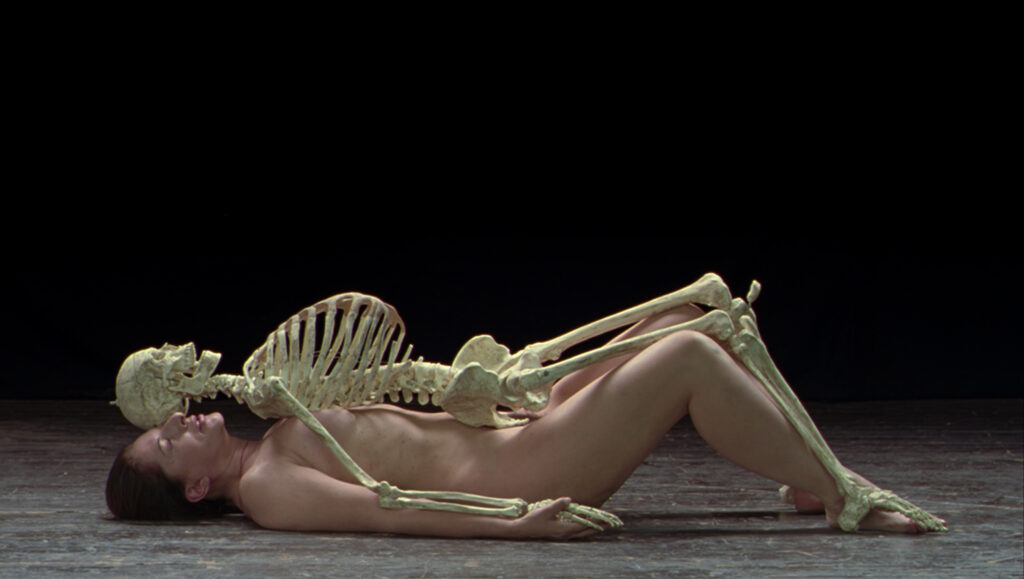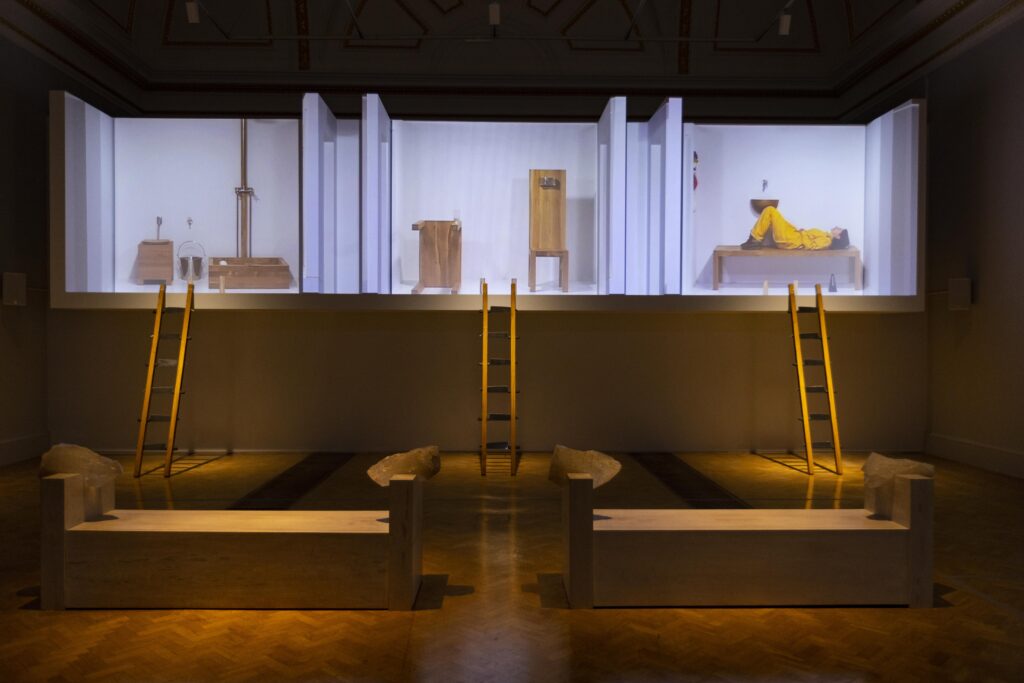5 Reasons to Take Part in Wrocław Off Gallery Weekend
Wrocław Off Gallery Weekend is a unique event that is organized in Wrocław, Poland on the October 18–20, 2024. It networks and unites various...
Guest Profile 16 October 2024
In 1997, Marina Abramović (b. 1946) attempted to scrub clean over 1,500 cows’ bones at the 47th Venice Biennale. The performance, titled Balkan Baroque, was a response to the 1992 breakup of Yugoslavia and the following ethnic conflicts in the region. Washing off the blood of the bones proved impossible, exposing the reality of the Balkan wars—you cannot wash the blood off the bones or your hands the same way you can’t erase its victims nor the collective shame from the war.
Now, you can find a room dedicated to this work and many others at London’s Royal Academy of Arts (RA) for their major retrospective exhibition encompassing video, photography, and performances re-enacted and overseen by Abramović. The Serbian artist is known for her grueling and often high-risk use of her body and mind for the sake of her performance work, subjecting it to injury, exhaustion, and violence, testing her own endurance and determination.

Marina Abramović, Balkan Baroque, June 1997. Performance at XLVIII Venice Biennale; 4 days. Courtesy of the Marina Abramović Archives. © Marina Abramović.
In her 1974 piece Rhythm 0, the artist allowed her audience to use various objects on her body as they pleased—all of these objects can be now seen exhibited on a table in RA’s Main Galleries in front of the documentation of the original performance. What began as a sequence of unusual interactions (application of perfume, offering of a rose) quickly took a darker and more disturbing turn. Audience members tore off her clothes, cut her skin until she bled, and even put a gun to her head (after which the performance came to a halt).

Marina Abramović, Rhythm 0, 1974. Performance; 6 hours. Studio Morra, Naples. Courtesy of the Marina Abramović Archives. © Marina Abramović. Photo: Donatelli Sbarra
Nearly half a century later, it remains a vivid and impactful reminder of the extent to which human beings are willing to dehumanize bodies, especially female bodies, and the unsettling dynamics that emerge when any kind of ethical considerations are temporarily suspended.

Marina Abramović / Ulay, The Lovers, Great Wall Walk, 1988. Performance; 90 Days, the Great Wall of China. Courtesy of the Marina Abramović Archives. © Marina Abramović / Ulay
The exhibition touches upon crucial creative periods of Abramović’s life, including the 12 years she spent in a relationship with German artist Ulay: one vast, central room is filled with documentation of their joint performances (Light/Dark, 1978, Breathing In/Breathing Out, 1977, AAA-AAA, 1978), while the following room is dedicated to their final work The Lovers, The Great Wall Walk from 1988, where they walked on the Great Wall of China for three months, eventually meeting each other in the middle in what became a public break-up where they called an end to both their collaboration as artists and their relationship.
The two rooms are connected by the reenactment of Abramović and Ulay’s Imponderabilia (1977), in which two expressionless young performers stand in for the original artists, positioned naked within a narrow doorway. The initial artwork required anyone walking over this threshold to brush against the artists. RA offers an alternative path to avoid this close encounter. Perhaps performances like this one lack the compelling nature of Abramović’s presence, her charisma, and her status as a celebrity.

Marina Abramović, Nude with Skeleton, 2005. Performance for Video; 15 minutes 46 seconds. Courtesy of the Marina Abramović Archives. © Marina Abramović
Another restaged performance at this retrospective is Nude with Skeleton from 2002. A visitor is met with a horizontal recording of Abramović lying naked with a human skeleton placed atop. Above the screen, a trained performer re-enacts Abramović’s action in a calm manner: a firm, alive presence to contrast the bleak screen below them.
Over her long career, Abramović became known for breaking the boundaries and going way beyond the human experiences for the sake of her audience, for our sake, who could identify with her on a personal level because of her almost tangible aura of physical and mental resilience, resulting in her becoming a type of an icon within the art world. That established artist-audience connection led to her ever-growing popularity and a large following, to which this retrospective stands as a testament.
The final rooms are filled with Abramović’s more recent sculptural and installation practices, including Portal (2022)—a doorframe with crystals lit up using LED lights, seemingly brought in the latest art practice (instead of solely paying homage to her well-known pieces from the twentieth century), the works are often presented in esoteric framing due to Abramović’s status as an “icon,” failing to explore recalled Eastern spirituality, materiality, and transformability in depth.

Gallery view of the Marina Abramović exhibition at the Royal Academy of Arts, London, from 23 September 2023 – 1 January 2024, showing The House with the Ocean View, 2002/2023. Courtesy of the Marina Abramović Archives. © Marina Abramović. Photo © Royal Academy of Arts, London / David Parry
Perhaps the most striking work re-enacted in this exhibition is The House With the Ocean View. The performance involves three artists, each performing continuously for 12 days following strict guidelines established by Abramović. These guidelines (restrictions on eating, talking, reading, and writing) might seem harsh and brutal but are actually a means of creating a structured choreography. Within these limitations, there is room for artistic freedom and choice. The goal of the piece, as described in the exhibition’s wall text, is to create a state of “luminosity” where bodily discomforts can be transcended.
Marina Abramović is at the Royal Academy of Arts, London, through 1 January 2024.
DailyArt Magazine needs your support. Every contribution, however big or small, is very valuable for our future. Thanks to it, we will be able to sustain and grow the Magazine. Thank you for your help!